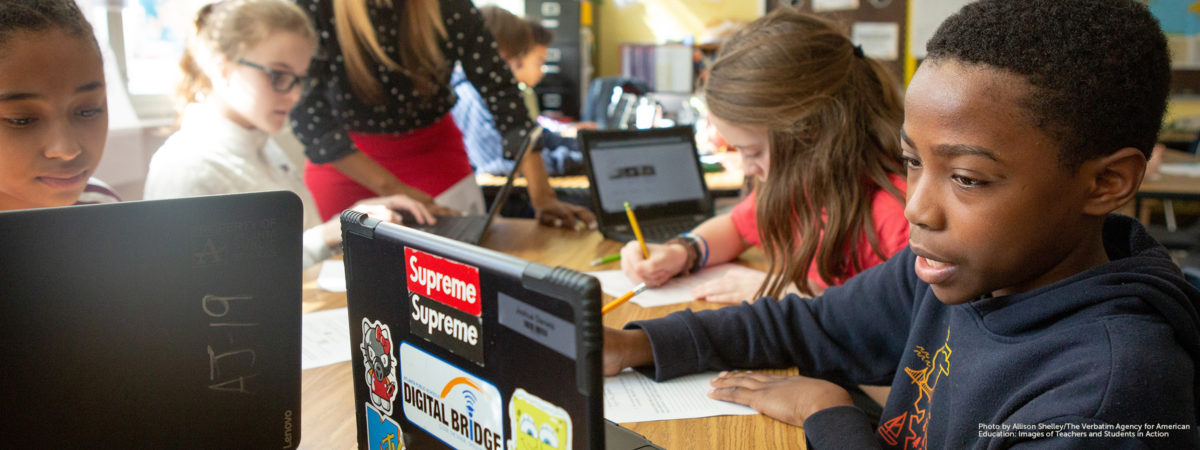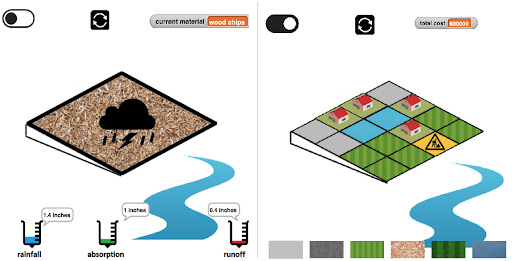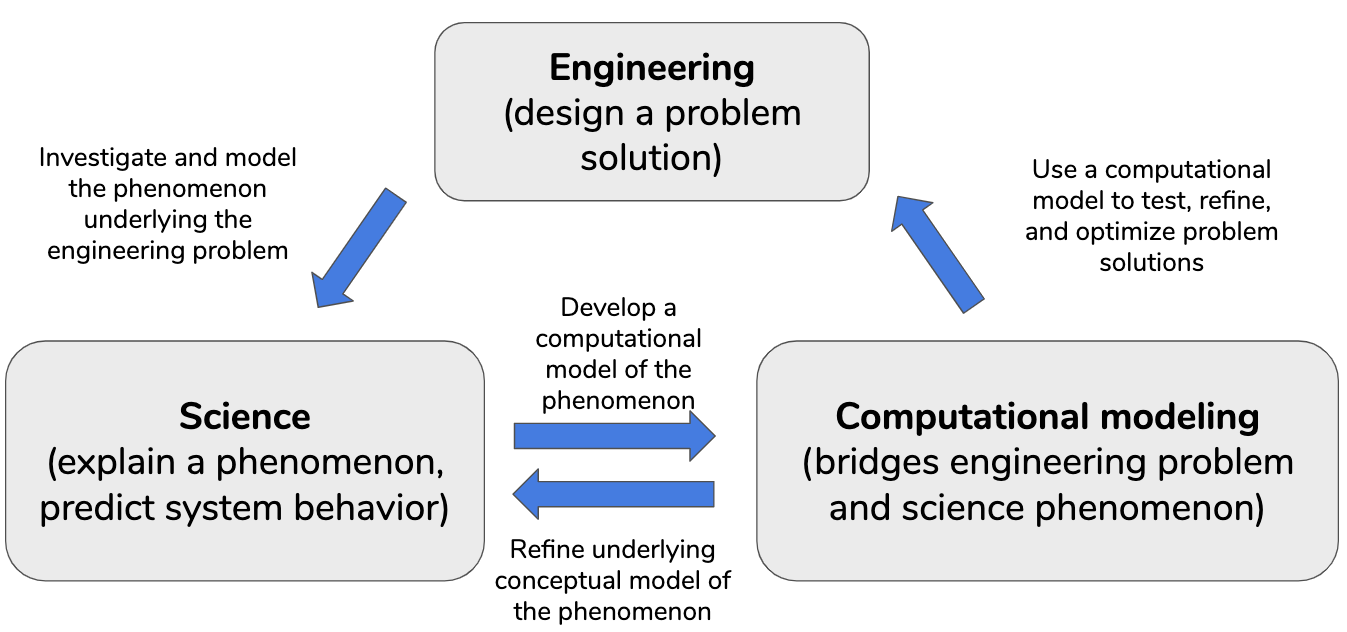
September 14, 2020 | By Kevin McElhaney
How can schools address the lack of diversity in computing education and related careers? One path is to make computational thinking (CT) learning opportunities more readily available to students, especially in the early grades. While many schools may not have the resources to offer courses in computing, integrating CT with the core STEM disciplines can lower barriers and prepare students to participate in authentic, STEM-integrated learning.
Science Projects Integrating Computing and Engineering (SPICE)
is a National Science Foundation-funded collaboration among Digital Promise, SRI International, the University of Virginia, and Vanderbilt University that addresses the need for curriculum materials that integrate CT with the STEM disciplines. The project team developed the Water Runoff Challenge (WRC), an NGSS-aligned, multi-week curriculum unit for upper elementary students that integrates Earth science, engineering, and CT. In the WRC, students address the problem of flooding of a schoolyard during heavy rainfall and are challenged to resurface the schoolyard in a way that minimizes surface water runoff during a storm (while also meeting constraints on cost, accessibility of schoolyard, and uses of different surface materials).
Early on, students engage in hands-on activities that compare how much different surface materials can absorb, and they develop a conceptual model that expresses the flow of rainwater based on matter conservation principles. Students are then introduced to key CT concepts, including variables, expressions, and conditionals, needed to develop a working computational runoff model. Students apply these concepts to develop a computational water runoff model and are supported in testing and debugging their code. Students use this model to design, test, and compare engineering solutions for the schoolyard.
In applying their CT skills, students use the computational runoff model C2STEM modeling environment, which was developed at Vanderbilt University. It simulates the effect of surface materials on water runoff from the schoolyard to the surrounding area and includes six materials, each having a predefined water absorption limit. In the model, students must specify that when the total rainfall on any material exceeds its water absorption limit, the remainder becomes runoff (Figure 1).

Figure 1. Screenshot of a correct implementation of the computational runoff model.
Students’ runoff model code is incorporated into a simulation environment for the engineering design task (Figure 2). For this, the students select appropriate materials for the different parts of the schoolyard to minimize the amount of runoff. Because the most absorbent and accessible materials tend to have the highest cost, students must consider trade-offs among these design variables as they use the simulation to refine and optimize their solutions. This experience teaches students how to use CT concepts and skills to solve an engineering design problem.

Figure 2. Screenshots of the runoff simulation. The left image shows the computational model being tested with wood chips. The rain gauge icons report the amount of rainfall, absorption, and runoff based on the students’ model code. The right image shows the schoolyard simulation, where students change and test the design by selecting from six available materials.
Based on SPICE research and design work, the SPICE team has articulated a framework (Figure 3) that can guide curriculum designers in coherently integrating science, engineering, and computational modeling in K-12 instruction:

Figure 3. A framework for integrating engineering, science, and computational modeling in STEM curriculum materials.
We hope this framework can encourage designers to use computational modeling to integrate science and engineering in ways that reflect professional STEM practice. The framework also highlights disciplinary intersections that teachers can promote as part of their students’ STEM-integrated learning experiences.
To learn more about other CT learning projects at Digital Promise, check out CT for NGSS, the CT Pathways toolkit, and Tough As Nails. Also, the curriculum and computational modeling environment from this project are described and demonstrated in this webinar.
By Pati Ruiz and Yenda Prado